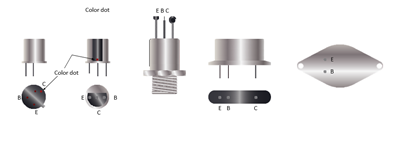Transistors, Vacuum Tubes, Filtering and Amplifier
Credit: 4 PDH Hours
Course Fee: $60.00
25 pages
How it Work!
- Register first and log into your account. Study and take the quiz for FREE until passed.
- After passing the quiz, follow the page, pay for the course and print your certificate.

The alternating layers of semiconductor material type provide the common commercial name for each type of transistor. The interface between the layers is called a junction. Selenium and germanium diodes previously discussed are examples of junction diodes. Note that the sandwiched layer or base is significantly thinner than the collector or the emitter. In general, this permits a “punching through” action for the carriers passing between the collector and emitter terminals.
Originally, vacuum tubes were developed for radio work. They are used in radio transmitters as amplifiers for controlling voltage and current, as oscillators for generating audio and radio frequency signals, and as rectifiers for converting alternating current into direct current. While there are many types of vacuum tubes for a variety of applications, the most common types fall into one of the following families:
- diode
- triode
- tetrode
- pentode
An amplifier is a device that enables an input signal to control an output signal. The output signal will have some or all of the characteristics of the input signal but will generally be a greater magnitude than the input signal in terms of voltage, current, or power. Gain is the basic function of all amplifiers. Because of this gain, we can expect the output signal to be greater than the input signal.
Learning Objective:
The learning objective of this PDH or CE continuing education course is the students to learn about the basics of transistors, vacuum tubes, filtering and amplifiers.
Review the quiz before studying the course.
Course Content
Course Author: Franco F. Davati, P.E.
Certificate of completion of the course
This course comes with a multiple-choice quiz. You can view the quiz and take the quiz if you are logged in your account. You can take the quiz for this online PDH course as many times until passed. The passing grade is 70% and above. After you pass the quiz simply follow the page, to pay for the course and print your certificate instantly. A copy of the certificate and receipt for this course will always be in your account.
This online PDH course can also be used as a continuing education course for the following.
